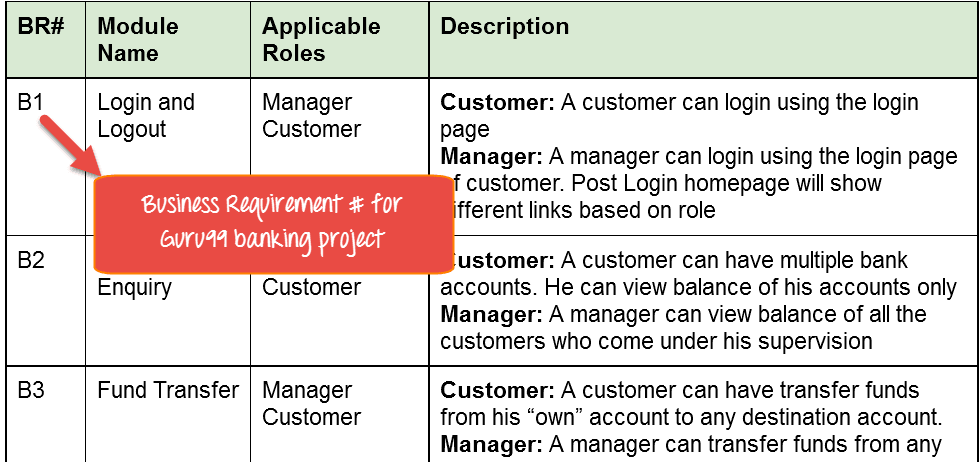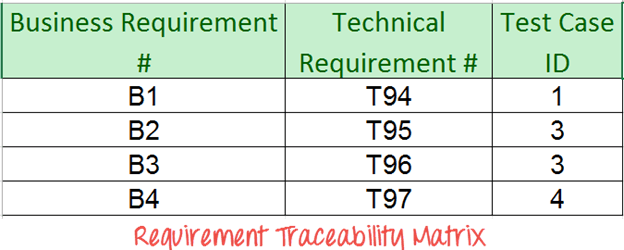What is Requirements Traceability Matrix (RTM) in Testing?
⚡ Smart Summary
The Requirements Traceability Matrix (RTM) is a structured document that links project requirements to their corresponding test cases, ensuring full coverage and validation. It plays a critical role in software testing by preventing missed functionalities, supporting compliance, and providing visibility across stakeholders.
What is Traceability Matrix (TM)?
A Traceability Matrix is a document that correlates any two baseline documents that require a many-to-many relationship to check the completeness of the relationship.
It is used to track the requirements and to check whether the current project requirements are met.
What is a Requirement Traceability Matrix?
A Requirement Traceability Matrix (RTM) is a document that maps and traces user requirements with test cases. It captures all requirements proposed by the client and requirement traceability in a single document, delivered at the conclusion of the Software development life cycle. The main purpose of the Requirement Traceability Matrix is to validate that all requirements are checked via test cases, such that no functionality is unchecked during Software testing.
Why is RTM important?
The main agenda of every tester should be to understand the client’s requirements and make sure that the output product is defect-free. To achieve this goal, every QA should understand the requirement thoroughly and create positive and negative test cases.
This would mean that the software requirements provided by the client have to be further split into different scenarios and further into test cases. Each of these cases has to be executed individually.
A question arises here on how to make sure that the requirement is tested, considering all possible scenarios/cases? How to ensure that any requirement is not left out of the testing cycle?
A simple way is to trace the requirement with its corresponding test scenarios and test cases. This is termed as ‘Requirement Traceability Matrix.’
The traceability matrix is typically a worksheet that contains the requirements with all possible test scenarios and cases and their current state, i.e., if they have been passed or failed. This would help the testing team to understand the level of testing activities done for the specific product.
Who needs RTM?
A Requirements Traceability Matrix (RTM) is not just for testers — it’s valuable for anyone involved in delivering high-quality software or projects.
- QA and Testers → Ensure 100% requirement coverage with well-mapped test cases.
- Business Analysts → Track requirements from SRS/User Stories through execution.
- Project Managers → Gain visibility into scope, progress, and missed requirements.
- Developers → Understand how features map back to business goals.
- Regulated Industries (Healthcare, Automotive, Aerospace, Finance) → Prove compliance and pass audits with clear traceability.
- Clients and Stakeholders → Get reassurance that their requirements are implemented and tested.
👉 In short, anyone responsible for building, validating, or approving software requirements benefits from RTM.
Which Parameters to include in the Requirement Traceability Matrix?
- Requirement ID
- Requirement Type and Description
- Test Cases with Status
Above is a sample requirement traceability matrix.
But in a typical software testing project, the traceability matrix would have more than these parameters.
As illustrated above, a requirement traceability matrix can:
- Show the requirement coverage in the number of test cases
- Design status as well as execution status for the specific test case
- If there are any User Acceptance tests to be done by the users, then the UAT status can also be captured in the same matrix.
- The related defects and the current state can also be mentioned in the same matrix.
This kind of matrix would provide One-Stop Shop for all the testing activities.
Apart from maintaining an Excel separately. A testing team can also opt for requirements tracing available in Test Management Tools.
Types of Traceability Test Matrix
In Software Engineering, a traceability matrix can be divided into three major components as mentioned below:
- Forward traceability: This matrix is used to check whether the project progresses in the desired direction and for the right product. It makes sure that each requirement is applied to the product and that each requirement is tested thoroughly. It maps requirements to test cases.
- Backward or reverse traceability: It is used to ensure that the current product remains on the right track. The purpose behind this type of traceability is to verify that we are not expanding the scope of the project by adding code, design elements, test, or other work that is not specified in the requirements. It maps test cases to requirements.
- Bi-directional traceability ( Forward+Backward): This traceability matrix ensures that test cases cover all requirements. It analyzes the impact of a change in requirements affected by the Defect in a work product and vice versa.
How to create a Requirement Traceability Matrix
Let’s understand the concept of Requirement Traceability Matrix through a Guru99 banking project.
On the basis of the Business Requirement Document (BRD) and Technical Requirement Document (TRD), testers start writing test cases.
Let’s suppose the following table is our Business Requirement Document or BRD for the Guru99 banking project.
Here, the scenario is that the customer should be able to log in to the Guru99 banking website with the correct password and user# ID, while the manager should be able to log in to the website through the customer login page.
The table below is our Technical Requirement Document (TRD).
Note: QA teams do not document the BRD and TRD. Also, some companies use Function Requirement Documents (FRD), which are similar to Technical Requirement Documents, but the process of creating a Traceability Matrix remains the same.
Let’s Go Ahead and create RTM in Testing
Step 1) Our sample Test Case is
“Verify Login: When the correct ID and Password are entered, it should log in successfully.”
Step 2) Identify the Technical Requirement that this test case is verifying. For our test case, the technical requirement T94 is being verified.
Step 3) Note this Technical Requirement (T94) in the Test Case.
Step 4) Identify the Business Requirement for which this TR (Technical Requirement-T94) is defined
Step 5) Note the BR (Business Requirement) in the Test Case
Step 6) Do the above for all Test Cases. Later, Extract the First 3 Columns from your Test Suite. RTM in testing is Ready!
Advantages of the Requirement Traceability Matrix
- It confirms 100% test coverage
- It highlights any requirements missing or document inconsistencies
- It shows the overall defects or execution status with a focus on business requirements
- It helps in analyzing or estimating the impact on the QA team’s work with respect to revisiting or reworking the test cases
Best Practices and Tips for Using RTM
A Requirements Traceability Matrix (RTM) is most effective when it’s kept simple, consistent, and updated regularly. Here are the best practices that will allow teams to ensure full coverage, minimal rework, and improved confidence in project delivery:
- Start Early → Create your RTM at the very beginning of the project.
- Keep It Updated → Update the matrix whenever requirements or test cases change.
- Use Clear IDs → Assign unique IDs to requirements and test cases for easy traceability.
- Cover Positive & Negative Cases → Ensure every requirement is validated from multiple test angles.
- Collaborate Across Teams → Involve testers, developers, BAs, and project managers in maintaining RTM.
- Leverage Tools → Instead of spreadsheets, consider test management tools (like Jira, HP ALM, or Zephyr) for scalability.
- Version Control → Keep historical versions to track changes and maintain compliance.
- Focus on Simplicity → Avoid overloading the matrix; highlight only essential parameters.
- Audit Regularly → Periodically review the RTM to catch gaps before testing deadlines.
- Link to Business Value → Map requirements back to business goals to show ROI.
Common RTM Challenges and Solutions
- Challenge: Keeping RTM Updated
Requirements and test cases change often, making RTM outdated quickly.
Solution: Use automated test management tools that sync requirements, test cases, and defects in real time. - Challenge: Excessive Complexity
Adding too many parameters makes RTM difficult to maintain and interpret.
Solution: Keep RTM lean by focusing only on essential fields such as IDs, descriptions, and status. - Challenge: Poor Team Collaboration
Different teams may not align on ownership or updates.
Solution: Define clear roles, involve testers, developers, and analysts, and schedule regular RTM reviews. - Challenge: Incomplete Requirement Coverage
Some requirements may lack test cases, leading to missed functionality.
Solution: Validate coverage regularly, use bi-directional traceability, and run audits before major releases. - Challenge: Manual Effort in Large Projects
Managing RTM in spreadsheets becomes time-consuming for complex systems.
Solution: Adopt RTM tools like Jira, HP ALM, or Zephyr to automate mapping and reporting.
Let’s learn RTM with an example in the Video
Click here if the video is not accessible
Requirements Traceability Matrix (RTM) Template
Click below to download the RTM Template Excel File
Download the RTM Template Excel(.xlsx)











